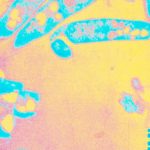Link to Pubmed [PMID] – 33006969
Link to DOI – 10.1371/journal.pntd.0008709
2020 Oct; 14(10): e0008709
Mycobacterium ulcerans is a human pathogen that causes a necrotizing skin disease known as Buruli ulcer. Necrosis of infected skin is driven by bacterial production of mycolactone, a diffusible exotoxin targeting the host translocon (Sec61). By blocking Sec61, mycolactone prevents the transport of nascent secretory proteins into the endoplasmic reticulum of host cells. This triggers pro-apoptotic stress responses partially depending on activation of the ATF4 transcription factor. To gain further insight into the molecular pathways mediating the cytotoxic effects of mycolactone we conducted the first haploid genetic screen with the M. ulcerans toxin in KBM-7 cells. This approach allowed us to identify the histone methyltransferase SETD1B as a novel mediator of mycolactone-induced cell death. CRISPR/Cas9-based inactivation of SETD1B rendered cells resistant to lethal doses of the toxin, highlighting the critical importance of this gene’s expression. To understand how SETD1B contributes to mycolactone cytotoxicity, we compared the transcriptomes of wild-type (WT) and SETD1B knockout KBM-7 cells upon exposure to the toxin. While ATF4 effectors were upregulated by mycolactone in both WT and SETD1B knockout cells, mycolactone selectively induced the expression of pro-apoptotic genes in WT cells. Among those genes we identified CHAC1, which codes for a major glutathione (GSH)-degrading enzyme, and whose strong upregulation in mycolactone-treated WT cells correlated with a marked reduction in GSH protein level. Moreover, GSH supplementation conferred cells with substantial protection against the toxic effects of mycolactone. Our data thus identify SETD1B/CHAC1/GSH as a novel, epigenetic mechanism connecting Sec61 blockade with apoptotic cell death. They suggest that GSH-based treatments might have the capacity to limit skin necrosis in Buruli ulcer.

